
Article contents

To retire on the official minimum pension income, you’ll need £366,374 in your pension pot, and this goes up to £1,089,014 for a comfortable retirement. Wow! But don’t worry, by starting now, using the right saving methods and taking advantage of the government's help it's possible.
Living costs are currently super high, and saving for your retirement might not be a priority right now. But should it be? Are you on track for saving enough to have a comfortable retirement? Or even enough to just get by? And, how much do you need to retire?
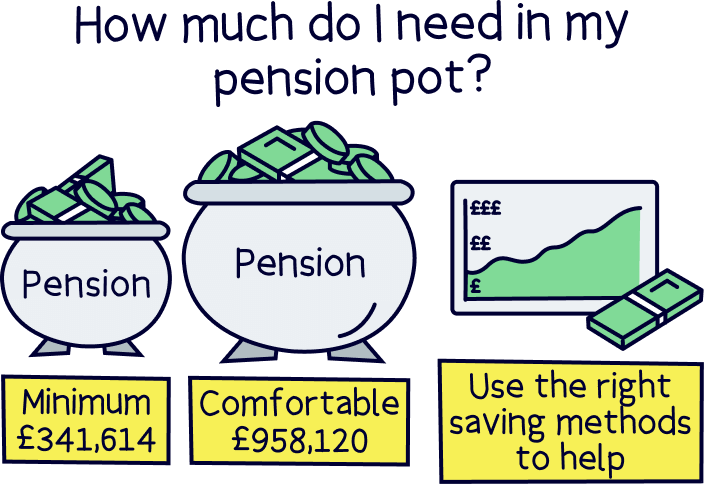
Let’s find out how much you’ll need in your pension pot when you retire and live the retirement you want.
First of all, did you know there’s actually different levels of retirement standards? There’s 3 categories for how we all might live (financially) when we retire, and how much you’ll need in retirement. They are:
Housing costs such as a mortgage or rent are excluded from these figures. So, if you think it’s likely you’ll have these costs when you retire, you’ll need to add them on top (and they can be a lot!). Plus, any other costs you think you might have, or would factor as part of a retirement lifestyle, for instance multiple holidays abroad.
Income Tax is also not counted. This is what you’ll pay on your pension income (when you take money out of your pension) if it’s over your Personal Allowance of £12,570 per year. Income tax is 20% on everything up to £50,270 (and 40% above that to £125,140 and then 45%).
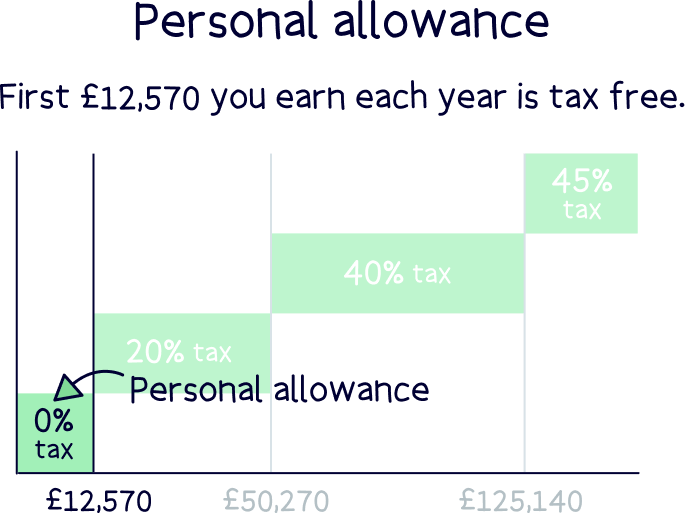
And here’s what you’ll need to earn (take out) of your pension every year to live within those retirement standards: (either as a single person, or as a couple.)
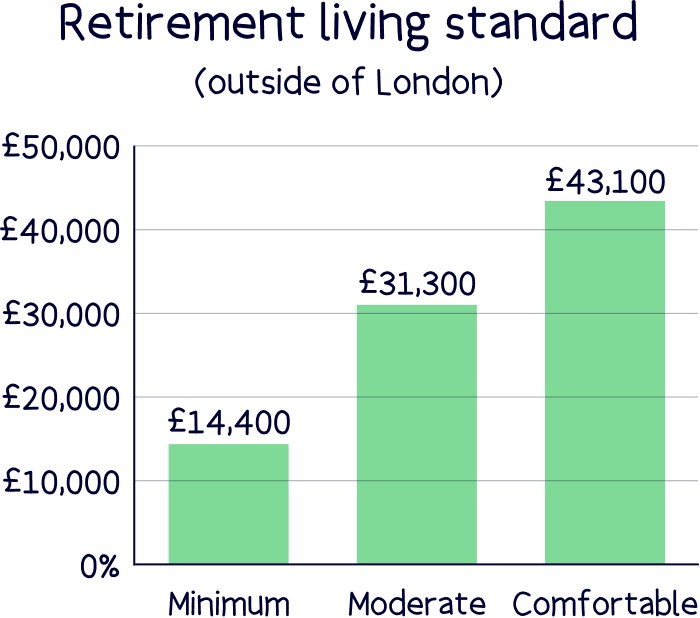
These are official figures, called the Retirement Living Standards, and put together by the Pensions and Lifetime Savings Association.
Pretty high figures aren’t they? You’ll need to earn quite a bit from your pension in order to live the retirement you want to. And these are just guidelines – we predict that you’ll likely need to earn more than this to continue the lifestyle you want, for instance multiple holidays, paying for hobbies, a new car, and all the small luxuries in life.
Boost your pension pot with a personal pension. Your future self will thank you.
So we now have a rough idea of how much we need to earn from our pension each year to have the lifestyle we want. But where does the cash actually come from? Doesn’t the government give you cash when you retire?
Here’s the 3 main types of pensions that you might have when you retire (don’t worry if you don’t have them, or not sure what they are, that’s why we’re here):
This is the pension you might get from the government when you reach retirement age (the official State Pension age), which is currently 66, but rising to 68.
You’ll get some State Pension if you’ve paid at least 10 years worth of National Insurance contributions, and the full amount once you’ve paid 35 years worth.
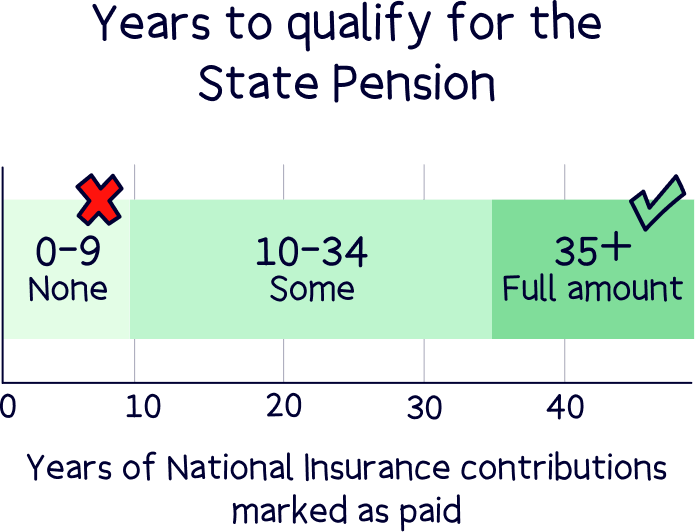
The full amount is currently £221.20 per week, so £11,502 per year.
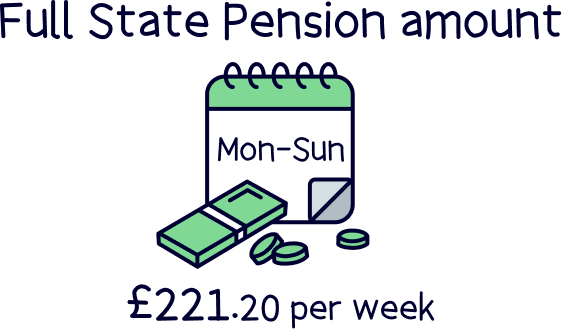
That’s not a lot! If you’re planning to retire just on this, you might be facing some serious financial difficulties in retirement. As a reminder, the amount for the minimum retirement standard is £14,400 outside of London and £15,700 within London, and that’s without a car or paying a mortgage or rent. By the way, that’s a lot less than the minimum wage (£19,760).
But don’t worry, there’s options to help save more, which we’ll cover later.
If you’re employed, you’ll most likely have a workplace pension. Every employer must now enrol their employees onto a pension scheme when they join as part of a legal scheme called ‘auto-enrolment’ (although you can opt out if you want to – not recommended).
With a workplace pension, your employer must add at least 3% of your salary into your pension, if you add 5% yourself. Which is pretty handy, it’s basically free money. And some nice employers sometimes add more, if you add more (speak to your HR team to find out).
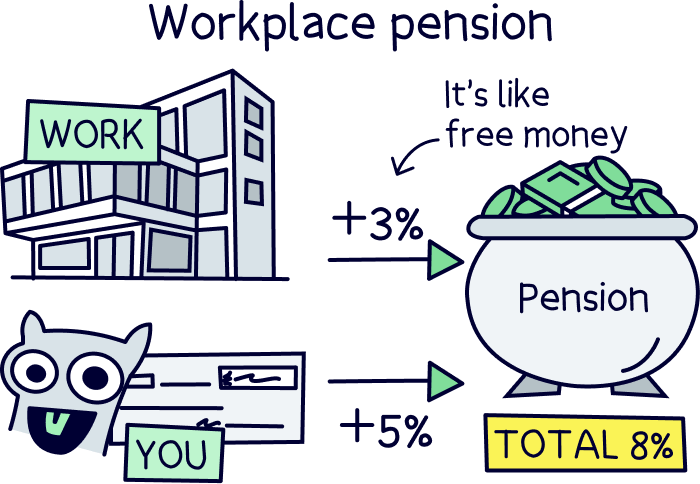
Your employer will decide which pension scheme your pension money will be invested in, unfortunately you don’t get a choice.
Your pension contributions are taken out of your salary before you pay tax, meaning they’re completely tax-free (you don't pay tax)!
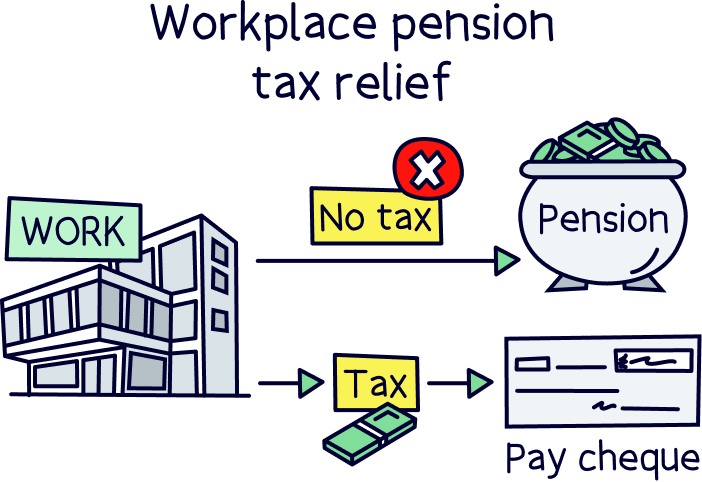
These types of workplace pensions are called defined contribution pensions (where you both contribute), and you both keep on adding money every time you get paid until you leave the job.
However in some workplaces, such as government jobs, like the NHS, there’s defined benefit pension schemes. These are where your pension is determined by things such as how long you’ve worked there and what your salary is. So, unfortunately, you don’t get any control over how much you pay in, or retire with.
And finally we have a personal pension. This is a pension you set up yourself, and you get to decide which pension company (provider) to use, and where your money is invested (by picking a pension plan), for instance in socially responsible investments (e.g. no fossil fuels).
You can save into personal pensions completely tax-free too. However, it’s a bit different to a workplace pension…
As you can’t pay into these directly from your salary, you would have paid Income Tax on the money you've earned (you'll see this amount on your pay cheque).
This means you've paid tax on the money you put into your personal pension. So, to refund this tax, the government will automatically add a bonus straight into your personal pension everytime you contribute money. Yep, we’re not joking! Free money every time you add cash to your pension.
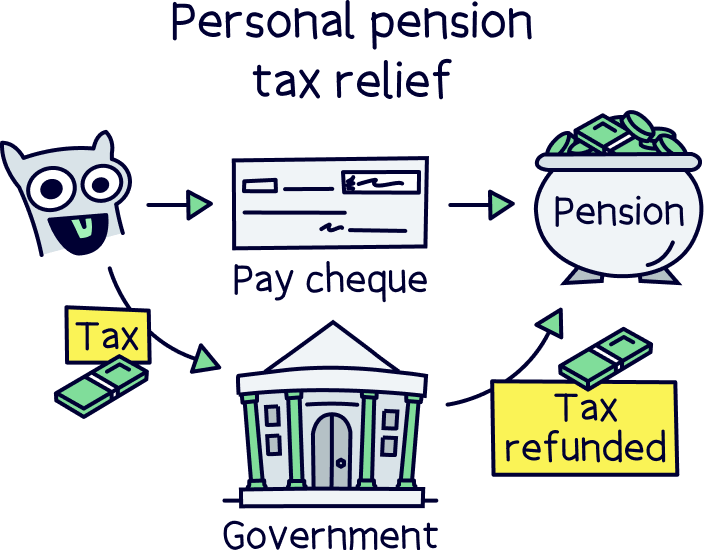
And this bonus is a massive 25%! Which refunds the basic rate of tax. And if you’re a higher rate taxpayer (earning over £50,270), or an additional rate taxpayer (earning over £125,140), you can claim back some tax you’ve paid at 40% and 45% too (you’ll do this on your Self Assessment tax return).
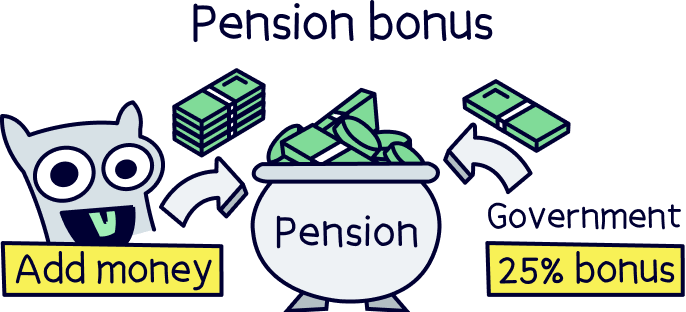
There’s also another type of personal pension, which is a self-invested personal pension, or SIPP. This is where you manage the investments within your personal pension – it’s all up to you where and how you want to invest your money.
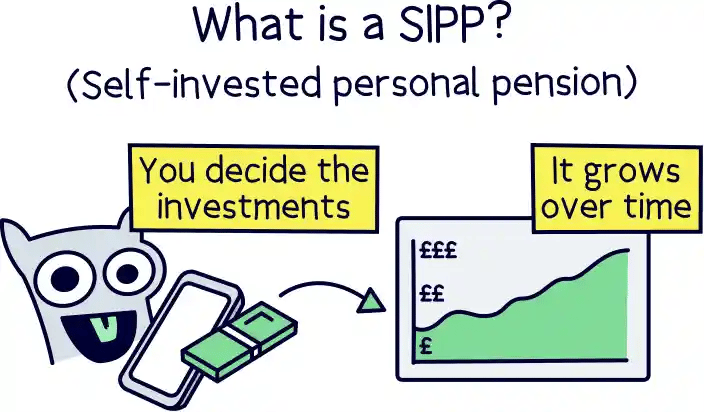
They’re normally suited to people who know what they’re doing when it comes to investing, so not most of us. It’s often better to let the experts handle things for you, they know what they’re doing and will grow your money sensibly over time.
Having said that, modern SIPPs are great for everybody. They can offer you a small range of investment options, all managed by experts (they’re basically exactly the same as regular personal pensions).
Using a modern SIPP provider you can benefit from control over your money (like no fossil fuel companies), low fees, the amazing government bonus, and experts handling everything for you. How great is that?!
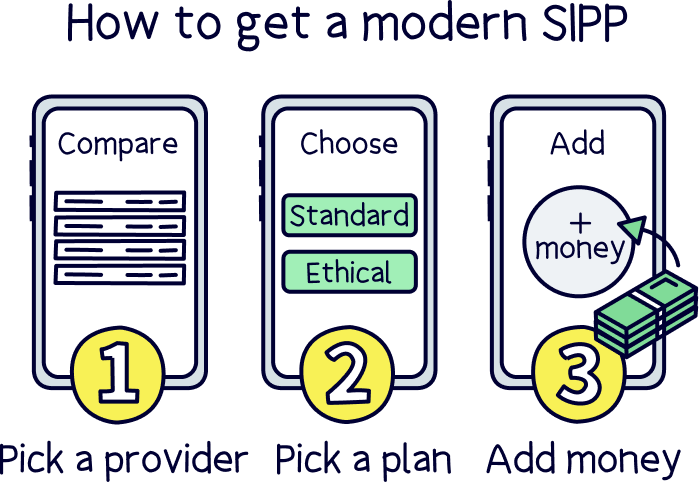
Plus, there’s some great ones out there. Not sure where to look? We’ve put together the best personal pensions to find the best for you. As a spoiler, the top rated is PensionBee¹ – they’re low cost, have a great track record of growing money, and are super easy to use. There’s also Moneyfarm¹ who can manage all your savings and investments (not just pensions).
Right, so that’s how much you’ll need to live every year in retirement (minimum, moderate, comfortable), and the 3 options you have to save for your retirement via a pension (State Pension, workplace pension and a personal pension), so how much do you need to save in total?
To save enough for your retirement, and for the level of retirement you’ll want, you’ll need a big pension pot in total (all of your pension pots added together). We’ve worked out the total you’ll need, if you retire at 68 and live to 100 (fingers crossed).
Total pension pot size (estimate):
Sorry to be the bearer of bad news. It's a lot isn't it?
The good news, the State Pension can make up a good chunk of this, providing you meet the full entitlement (35 years contributions) – and most people working will easily reach this.
If we adjusted the pension pot total to account for the income you get from the State Pension, then you’ll need to save a lot less, especially for the minimum standard of living in retirement.
Total pension pot size with the State Pension removed (estimate):
To clarify, this is what you’d need to save within your workplace pension and/or personal pension, which you can then take an income from when you retire, and this income is added to the State Pension to get your desired yearly income.
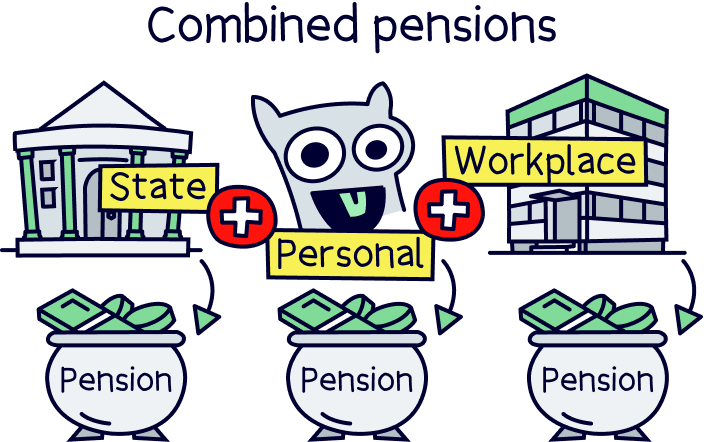
The bad news is, it’s still a lot of cash to save! The good news is that there’s lots of help to get you there, and your money within your pension will grow a lot over time too – you don’t need to actually save this amount, it’s the total you’ll need to have when you retire. Let’s cover how that works a bit more.
When you save cash into a pension, it’s not kept as cash, it’s actually invested, sensibly, and by experts who know what they’re doing. This means your money grows over time, and it can really add up! After a few years, you might find those pension pot targets above are not so daunting.
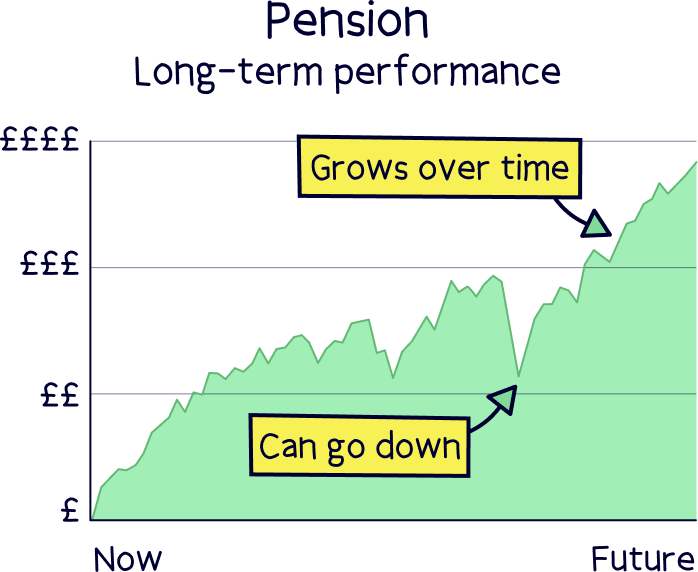
What actually happens is your money is invested within a pension fund. This is where lots of different peoples money is pooled together, and used to buy investments such as:
Typically these investments will grow over time in a safe and sensible way, constantly managed and adjusted by experts who are highly experienced in growing pension funds.
All you need to do is simply add your money to your pension pot. As simple as that.
Nuts About Money tip: the earlier you add money (and if you add money regularly), the more your money can grow. That’s down to a concept called compound interest.
This is where the money you make from your investments (the interest), is essentially reinvested and also begins to make money, and this snowballs over and over.
Let’s look at an example:
Let’s say in the first year you have £500 and make a return of 10% (so it increases by 10%). You now have made £50, and in total you now have £550. In the next year, your investments go up by 10% again. This time you’ve now made £55 as you’re making 10% on £550 rather than £500. And in the next year you’d earn £60.50, and so on and so on, the number keeps on going up. You get the idea!
Your money is compounding over time, and this is a massive deal for pensions.
For example, let’s say you earn the average salary of around £33,000 per year, and have a pension of £10,000 after working for a few years. With your workplace pension, you’ll be paying 8% of your salary into your pension (5% from you, and 3% from your employer) – that’s £220 per month.
If your pension grows at 7% per year (average growth rate), after 25 years, you’ll have saved £235,470. Wow! And after just another 10 years, you’d have £511,294!
And every year after it grows more in a shorter time frame (for instance, just one more year growing at 7% would be a massive £35,791 – that’s more than the average salary!).
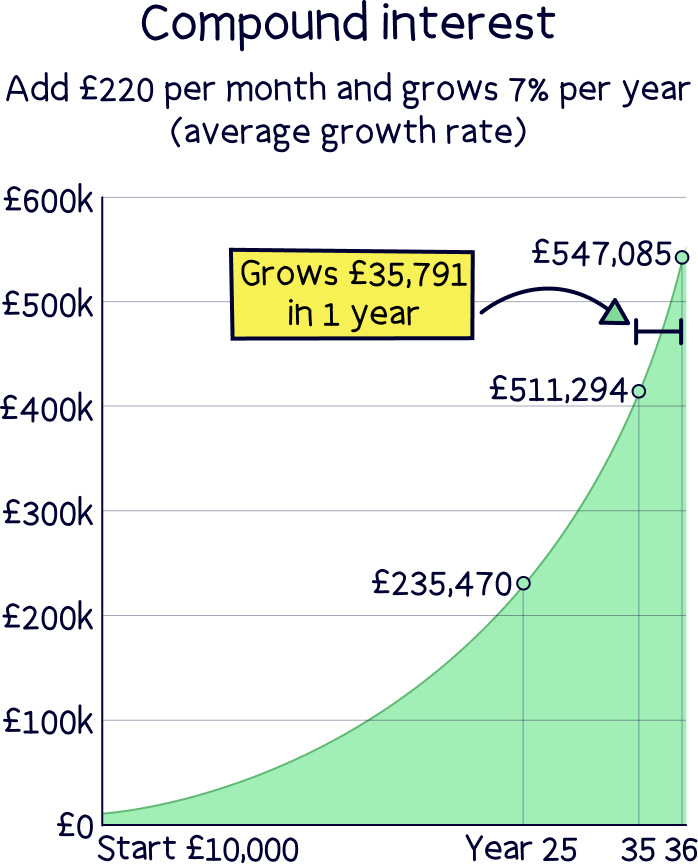
Now if you were to add extra into a personal pension, imagine how much faster your pension would grow, and how much you’d have at the end! (Even adding in £100 per month can have a huge impact in the future).
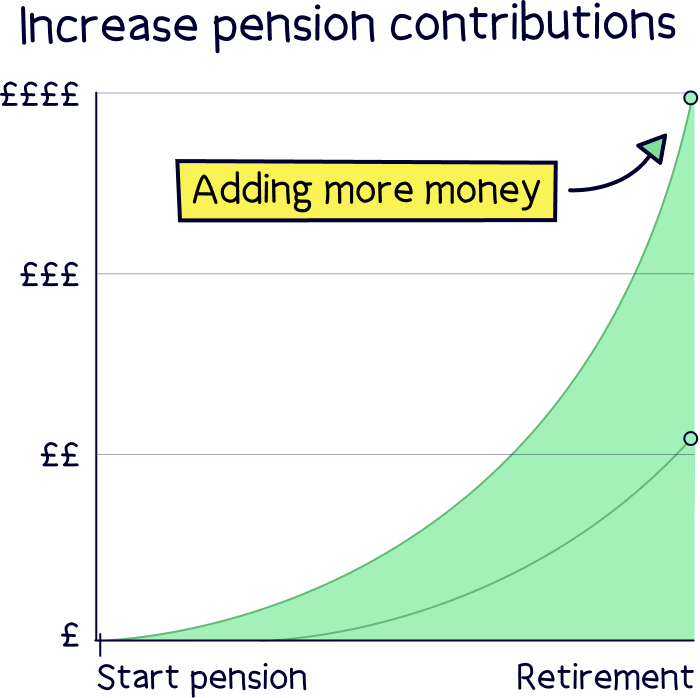
So, the lesson here is to start as early as you can, and regularly contribute as much as you can spare. Don’t forget you’ll also get the 25% government bonus when you add your own cash. Your money will really add up, and you’ll be nearer those huge pension pot totals by the time you retire!
So, saving your own pension, not the State Pension, you have 2 options if you’re employed, a workplace pension and a personal pension. And if you’re self-employed, you’ve only got 1 option, a personal pension (don’t worry, they’re often better).
If you’re employed, we recommend saving 5% of your salary into a workplace pension, this means your employer has to add 3% themselves. Whoop! So you’re essentially getting loads of free cash.
And if you have a kind employer who will add even more if you add more, then you should take them up on that. Even more free cash, nice!
However, after that, we don't recommend adding any more money to your work pension (unless it’s a bonus, where you can save tax on the whole amount).
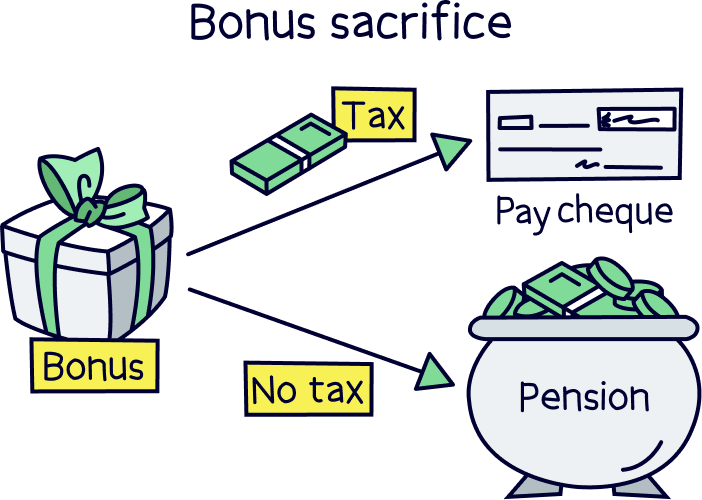
Instead, set up, and start paying into your very own personal pension. This way you get to decide who your pension provider is, rather than your employer. You can pick one that's easy to use, has nice low fees, a good track record of growing money over time, and pension plans that you decide (such as socially responsible investments – e.g. no fossil fuels. We’re big fans of those here at Nuts About Money).
Remember, you'll still be saving tax free, as you’ll automatically get the awesome 25% bonus from the government every time you pay in (plus claim back more if you’re paying a higher rate of tax). And, you'll have the flexibility to transfer it to another provider whenever you want (if you want to).
With a workplace pension, it’s stuck with the provider your employer choses, and they’re often not the best – with expensive fees and poor performance. You can’t even transfer it to another provider until after you leave your company.
And with a personal pension, you can consolidate all of your old workplace pensions, or any other personal pensions you have, into one single pension. Making it much easier to manage and you won’t forget about it. We bet you don’t know how much your current pension pots are worth, do you? (Don’t worry!)
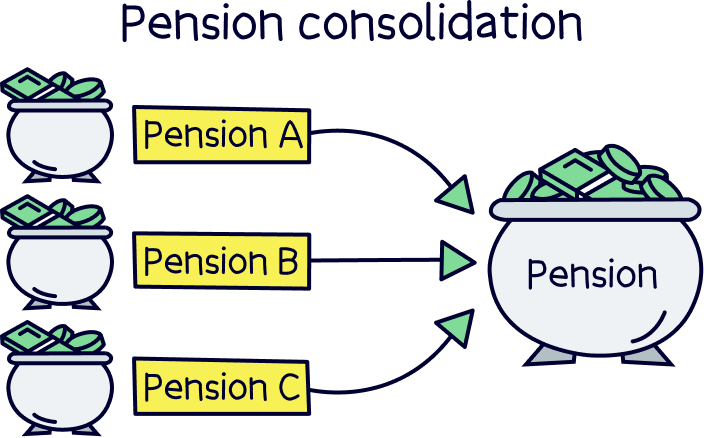
Plus, you can potentially benefit from lower fees – as good pension providers tend to reduce their fee if you have more saved with them (as a % of the total amount you have saved).
And where do you find these awesome personal pensions? Don’t worry – we’ve done the research to find the best personal pensions. And here’s our top picks:
Get £50 added to your pension



PensionBee is our recommended provider – they’ve thought of everything.
Their 5 star rated app (and website) makes it easy to set up and use. You can open a brand new pension, or transfer your existing pensions across (they’ll handle all the paperwork).
Simply pick from an easy to understand range of pension plans, and that’s it, the experts manage everything from there.
It’s low cost, with one simple annual fee. The customer service is excellent, and you’ll get a dedicated account manager for any questions you might have.

And, when the time comes to retire, withdrawing from your pension is easy too.
You can also use them if you're self-employed or a company director.



Moneyfarm is a great option for saving and investing (both ISAs and pensions). It's easy to use and their experts can help you with any questions or guidance you need.
They have one of the top performing investment records, and great socially responsible investing options too. Plus, you can save cash and get a high interest rate.
The fees are low, and reduce as you save more. Plus, the customer service is outstanding.




AJ Bell is well established, with a good reputation.
It's one of the cheapest SIPPs out there (charging a low annual fee).
There's a huge range of investment options – pretty much every investment out there (including both funds and shares).
The customer service is excellent too.
Overall, it's one of the best options for a SIPP.

Boost your pension pot with a personal pension. Your future self will thank you.
We've mentioned how much your money can grow due to the government bonus and compounding interest and this is great!
However, there’s some limits to be aware of. The most you can save per year tax-free is either your total income (e.g. salary), or £60,000, whichever is lower.
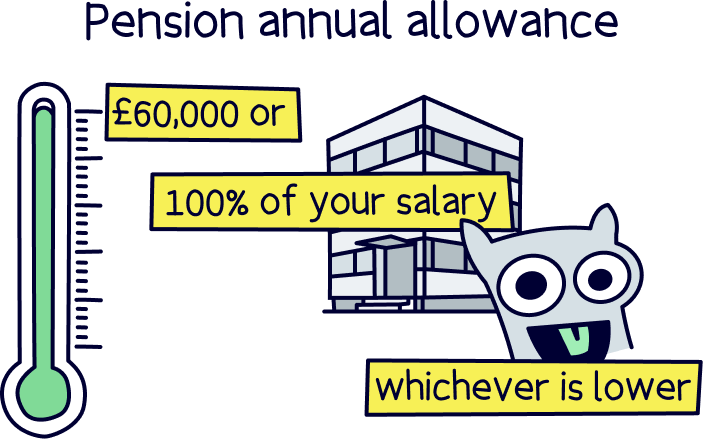
You’ll likely not need to worry about this, but just in case your pension pot grows pretty big and fast, you’ll want to be conscious of it. The best alternative to saving within a pension if you think you might hit that limit is a Stocks and Shares ISA.
When you retire, you’ve got a couple of options to start taking your pension (and hopefully you’ve built up a good pension pot by then).
With the State Pension, you’ll start getting this at age 66 (68 in the future), however you can defer this if you like, which will increase your payments when you decide to take it.
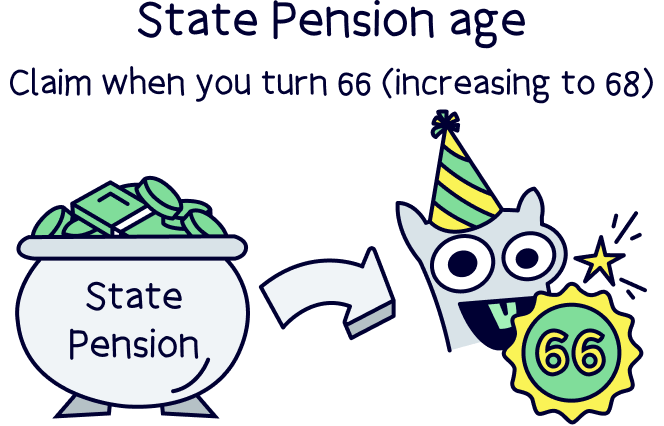
And with a personal pension, you can start taking it from 55 (57 in 2028) if you like. However, when you start taking money out of your pension, you will only be allowed to put £4,000 back in (per tax year). So make sure you need it.
Next you have two choices, you can take the first 25% of it as a tax-free lump sum (in one go). Or, if you take regular payments, 25% of every payment will be tax free. The remaining 75% will count towards Income Tax.
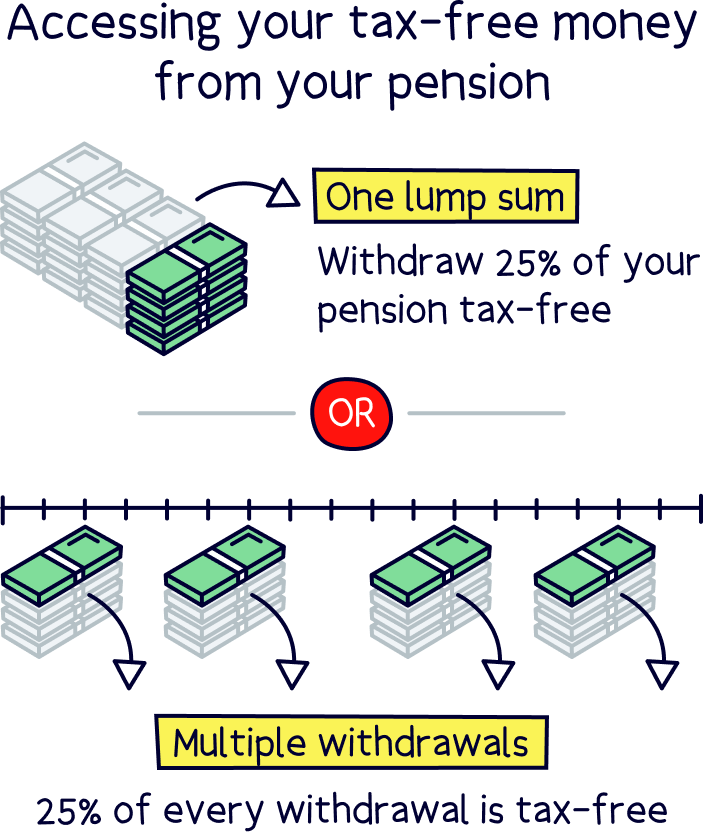
You’ll still have your Personal Allowance of £12,570 every year, before you have to pay tax, so you might end up not paying any, or not too much tax anyway. It depends how much your income is at the time. It works just like tax on your salary.
Nuts About Money tip: if you keep your money invested until you really retire, you’ll probably have a much bigger pension pot, and have a much more comfortable life in retirement!
So how do you get your pension? Your two main options for taking your pension in retirement is either using your pension pot to buy an annuity, this provides a guaranteed income each month for the rest of your life (or a set number of years).
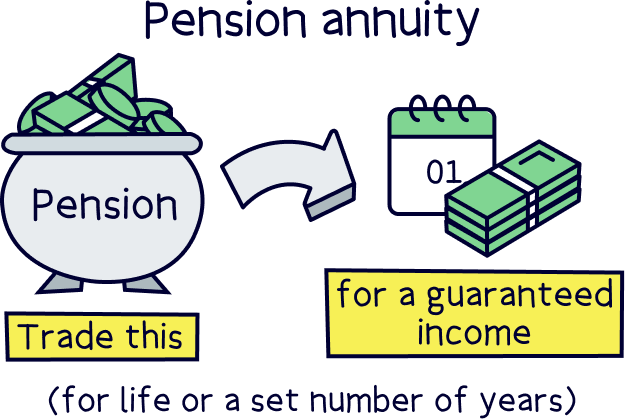
Or, you could simply leave your pension invested, perhaps in a pension plan that aims to provide a monthly income, and simply withdraw the cash each month (called drawdown). The choice is yours!
Your pension provider will go through all your options when the time comes. And you could also speak to an independent financial advisor for expert advice.
As you can probably tell, pensions can be complicated – we hope this has helped make sense of them a bit more.
We’ve covered how much you’ll likely need as a retirement income each year, within 3 easy to understand levels, minimum, moderate and comfortable – although of course, it will be unique to you, depending on your own circumstances and what you spend money on when you retire.
As a reminder, the total pension pot you’ll need for those levels ranges from £366,374 to £1,089,014 (if you don't have a State Pension). Crikey!
They seem big now, but thanks to saving regularly and the government bonus and compound interest, you can grow your pension pot pretty big! The key thing is simply getting started, even a small amount now and again, can grow to a very large amount over time. But we recommend adding as much as you can (without stretching yourself).
The best way to build up your pension pot is often with a personal pension. In addition to the State Pension and a workplace pension (if you have one). You get to choose which pension provider you want, get at least a 25% bonus on everything you put in. And the experts will also handle everything for you too – all you need to do is add money.
We’ve put together the best personal pensions to help you find a great provider – and PensionBee¹ comes out top. It’s 5 star rated, has low fees, is easy to use, and has a great track record of growing money.
And we’re sure you know this by now, but the earlier you start, the better retirement you’ll have! Good luck saving!
Boost your pension pot with a personal pension. Your future self will thank you.
Boost your pension pot with a personal pension. Your future self will thank you.
We’d love to hear from you, and it will help others too.
Boost your pension pot with a personal pension. Your future self will thank you.